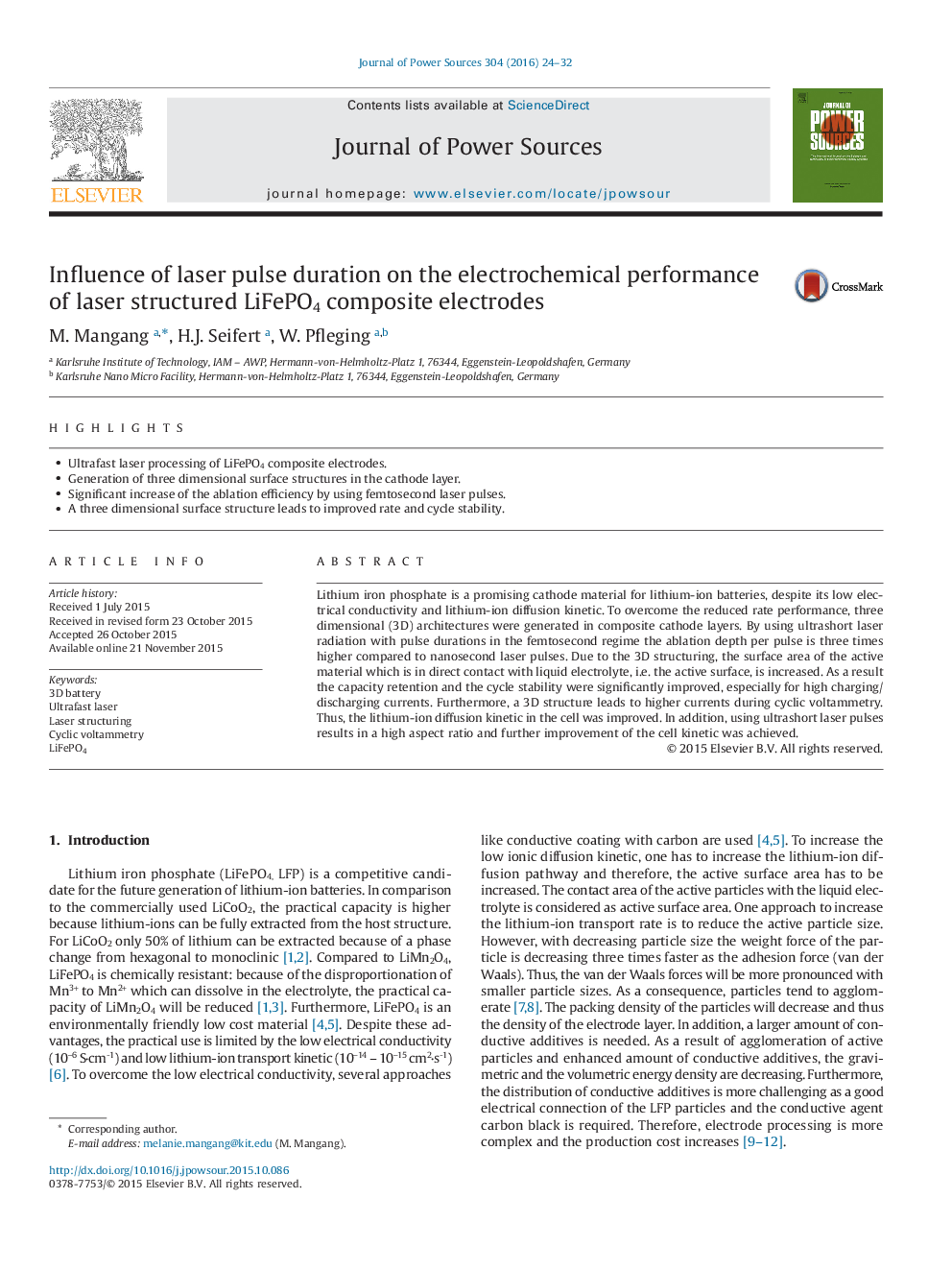| Article ID | Journal | Published Year | Pages | File Type |
|---|---|---|---|---|
| 1285649 | Journal of Power Sources | 2016 | 9 Pages |
•Ultrafast laser processing of LiFePO4 composite electrodes.•Generation of three dimensional surface structures in the cathode layer.•Significant increase of the ablation efficiency by using femtosecond laser pulses.•A three dimensional surface structure leads to improved rate and cycle stability.
Lithium iron phosphate is a promising cathode material for lithium-ion batteries, despite its low electrical conductivity and lithium-ion diffusion kinetic. To overcome the reduced rate performance, three dimensional (3D) architectures were generated in composite cathode layers. By using ultrashort laser radiation with pulse durations in the femtosecond regime the ablation depth per pulse is three times higher compared to nanosecond laser pulses. Due to the 3D structuring, the surface area of the active material which is in direct contact with liquid electrolyte, i.e. the active surface, is increased. As a result the capacity retention and the cycle stability were significantly improved, especially for high charging/discharging currents. Furthermore, a 3D structure leads to higher currents during cyclic voltammetry. Thus, the lithium-ion diffusion kinetic in the cell was improved. In addition, using ultrashort laser pulses results in a high aspect ratio and further improvement of the cell kinetic was achieved.
